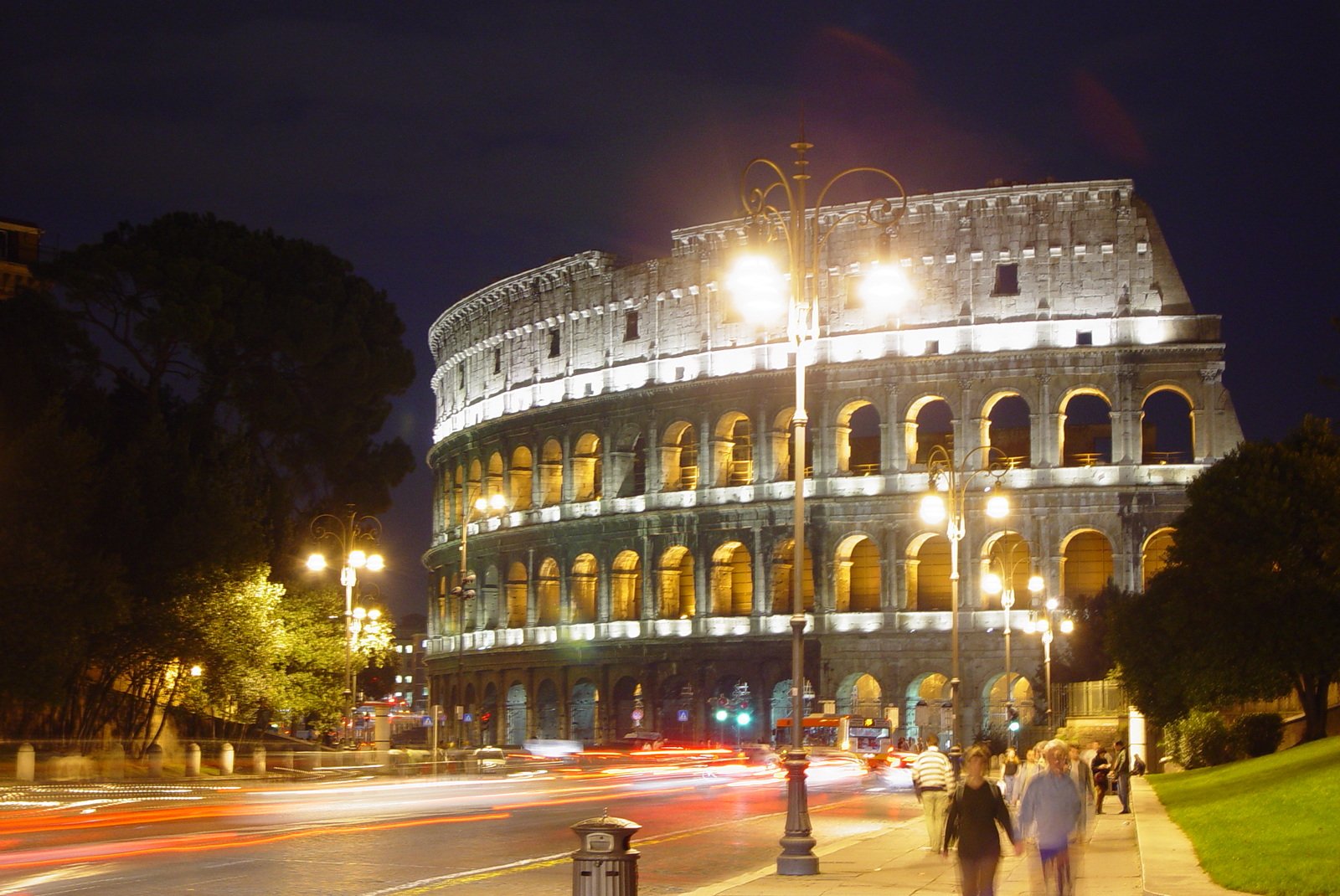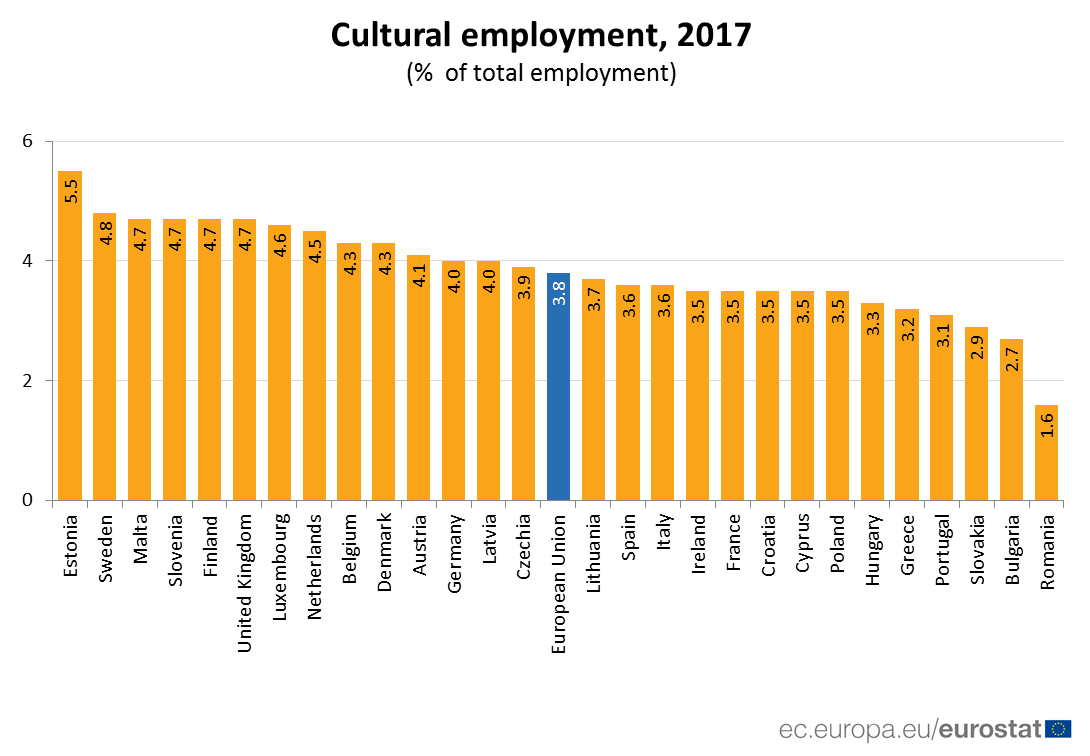According to Eurostat, in 2017, around 8.7 million of European citizens were working in a cultural sector or occupation. This group of workers represents 3.8 % of the total number of people in employment.
Key words: cultural sector, economic impact, creativity
What do we mean by ‘cultural sector’?
The first thing that comes to our minds when we think of culture is probably a painting in a museum, a library filled with books or a night at the opera. However, the cultural sector covers a wider range of activities that are worth mentioning when referring to this sector. Broadcasting a tv show, recording a song or designing a piece of clothing are also activities carried out by cultural industries.
But, what is exactly a ‘cultural industry’? As John Newbigin points out, “in some countries the definitions revolve closely around the arts and culture. Other countries have broader definitions that include, for example, food and gastronomy on the basis that food and cuisine have both economy and cultural significance. Other countries have a definition that includes well-established business-to-business industries such as publishing, software, advertising and design”. Although its definition is rather unclear, because the cultural sector does not constitute an “easily identified industrial ‘sector’ in the way that aerospace, pharmaceuticals or automotive”, it seems obvious that the cultural sector is of great importance to the economy, since it gives employment to professionals such as writers, architects, musicians, journalists, actors, dancers, graphic designers, and many others.
The economic impact of the cultural sector
Another remarkable aspect of culture is its capacity to foster other areas of the economy, such as tourism or foreign investment.
Many countries around Europe enjoy a great inflow of tourists attracted by the extensive cultural offerings of their cities. El Paseo del Prado in Madrid; the ancient sites of Rome; or the cultural agenda of London, are only a few examples of this.
Regarding foreign investment, in the past few years, we have witnessed how HBO series Game of Thrones shot many of its settings in Spain, Croatia or Norther Ireland. Consequently, these territories have experienced an important economic impact. According to BBC, Game of Thrones generated £19 m for Northern Ireland when it was filmed there. In a reciprocal exchange, these locations were chosen because of their cultural heritage, and Game of Thrones’ cultural industry helped these territories to boost their economies.
Promoting creativity through culture
Given the wide variety of industries that fall within the cultural sector: What is the distinctive feature of a cultural industry? “One thing all these [cultural] activities had in common was that they depend on the creative talent of individuals and on the generation of intellectual property”, claims Newbigin.
Indeed, culture is intrinsically linked with the idea of creativity. And nowadays, creativity is essential for two reasons. In the first place, creativity helps us to tackle the new challenges raised from the use of new technologies. “The fusion of the arts and creative industries with digital technology was spawning whole new industries and skills”. Secondly, creativity is essential for a country that aims to stand out from the rest of its competitors. “In a time of rapid globalisation, many countries recognise that the combination of culture and commerce that the creative industries represents is a powerful way of providing a distinctive image of a country or a city”. In conclusion, it seems like the cultural sector should occupy a leading position in our societies, not only because of its economic and innovative potential, but also for its capacity to shape our vision of the world. “It is sometimes said that where oil was the primary fuel of the 20th century economy, creativity is the fuel of the 21st century. Policies to promote and protect creativity will be the crucial determinants of success in the 21st”, asserts Newbigin.
Learn to create
Aware of its potential and aiming to detect the mistakes and weaknesses of the current system , the European Union is supporting the project Learn to Create that aims to design, test and validate a new work-based learning (WBL) programme in Europe’s Creative and Cultural Industries (CCIs).
According to Eurostat, the term ‘cultural employment’ relates to employment in economic activities such as:
- creative, arts and entertainment activities
- libraries, archives, museums and other cultural activities
- publishing of books, periodicals and other publishing activities; printing
- programming and broadcasting activities; motion picture, video and television programme production, sound recording and music publishing activities
- specialised design activities.
The ultimate goal of the project is to tackle the EU challenges of reducing youth unemployment and the adaptation of the current workforce to sustain and grow employment.
References
- Eurostat (2018) ‘8.7 million people in cultural employment in the EU’: https://ec.europa.eu/eurostat/en/web/products-eurostat-news/-/DDN-20190218-1
- Newbigin, John (2014) ‘What is the creative economy?’: https://creativeconomy.britishcouncil.org/guide/what-creative-economy/
- Economic impact of Game of Thrones:
- El País (2016) ‘Spain’s Basque Country benefits from the GOT effect’: https://elpais.com/elpais/2016/07/25/inenglish/1469450838_944415.html
- BBC (2016) ‘GOT brings estimated £150m to Northern Ireland’:https://www.bbc.com/news/uk-northern-ireland-36749938
- Business journalism (2015) ‘Entertaining business: Economics of GOT’: https://businessjournalism.org/2015/04/entertaining-business-the-economics-of-game-of-thrones/
- The Telegraph (2014) ‘GOT boosts Spanish town’s economy’: https://www.telegraph.co.uk/culture/tvandradio/game-of-thrones/11181710/Game-of-Thrones-boosts-Spanish-towns-economy.html


